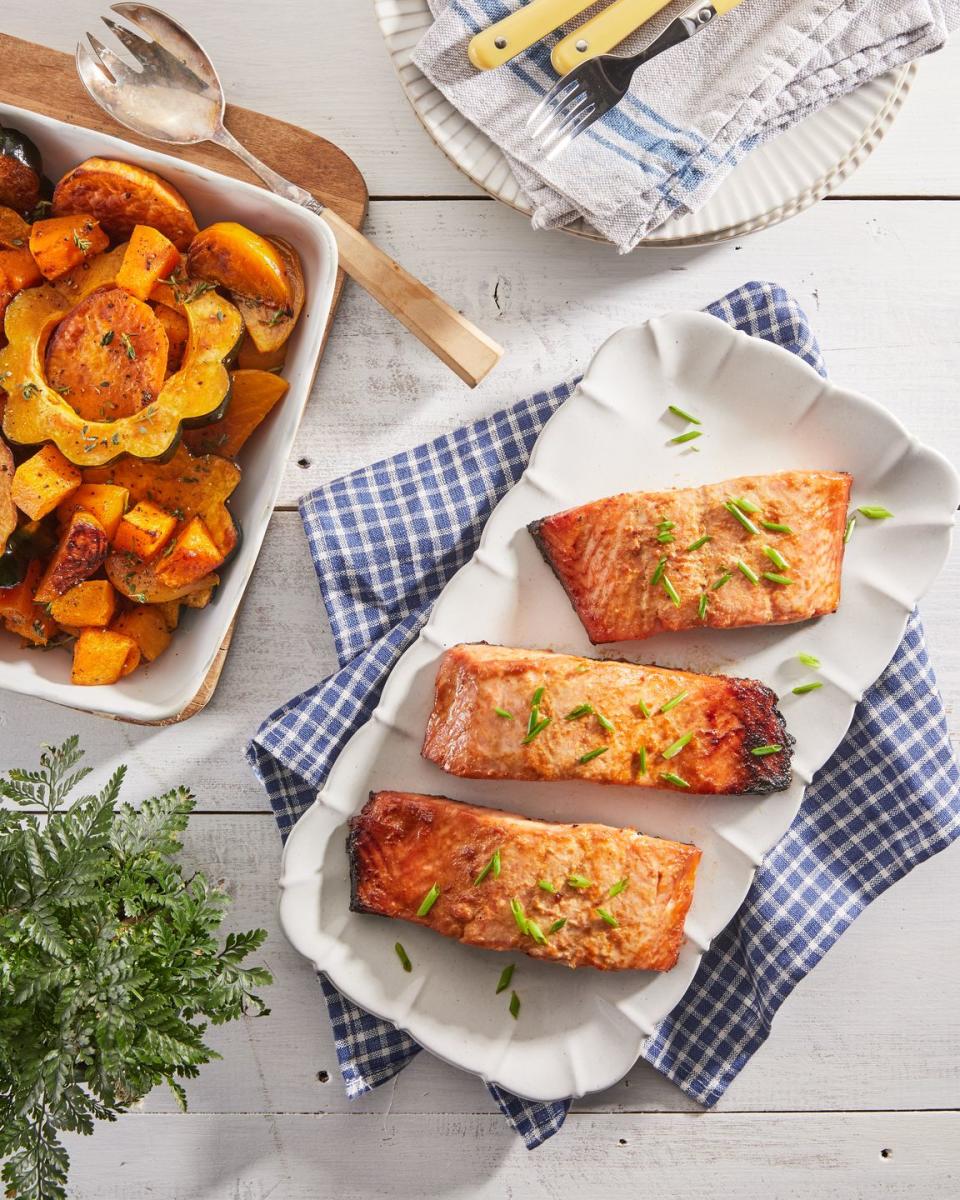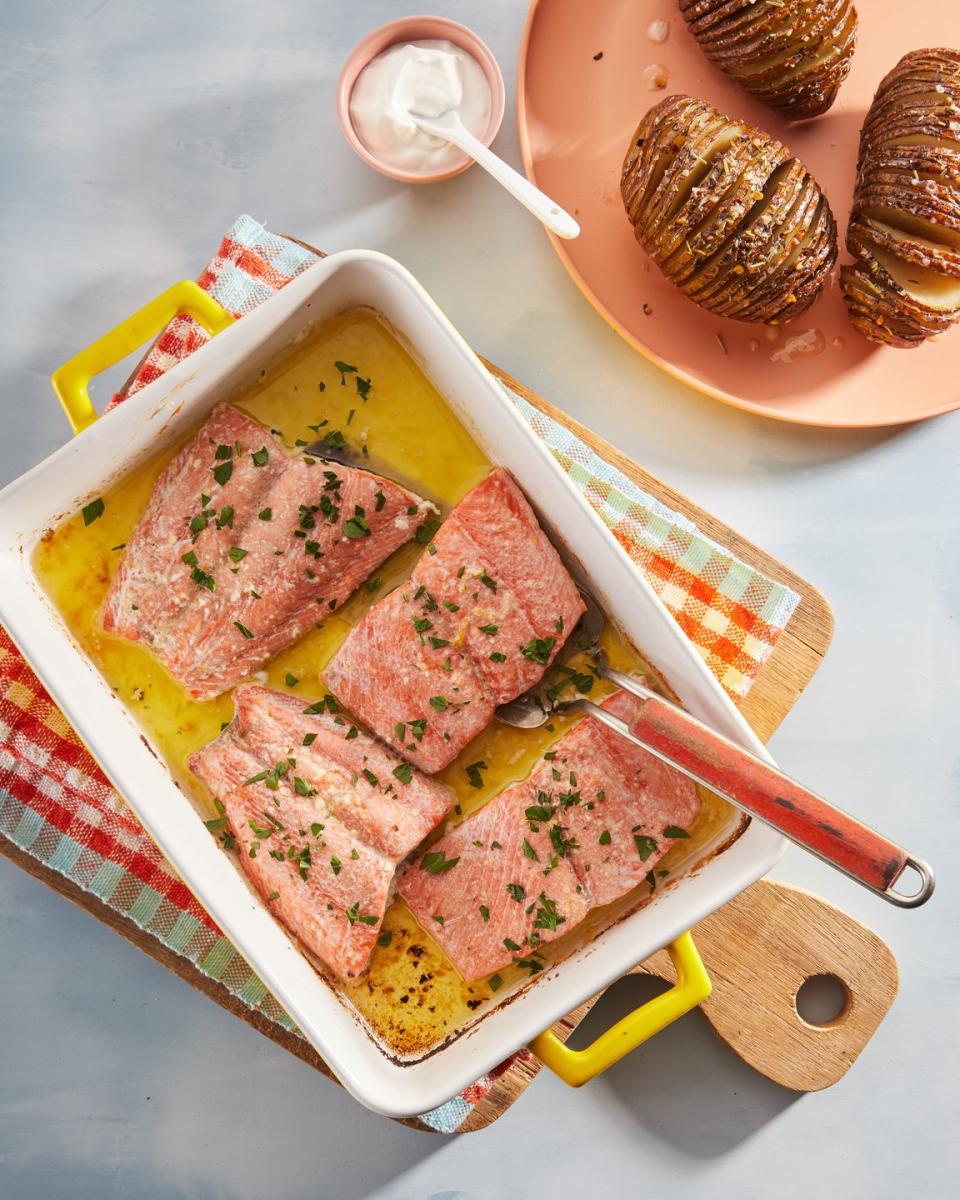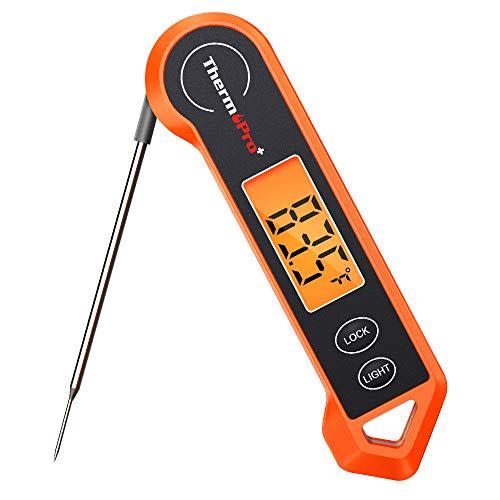You Should be Cooking Salmon to This Temperature!

"Hearst Magazines and Yahoo may earn commission or revenue on some items through these links."
Do a quick search for the correct salmon temperature, and chances are you'll see the number "145°F" big and bold, right at the top of your search page. Unfortunately, cooking salmon to that temperature this will ruin the fish, making it taste tough and chewy, and fairly flavorless.
The truth is, it's best to cook salmon to between 120°F and 125°F. But where does the 145°F number come from? And is it safe to cook salmon lower than that?
If you have questions about where these numbers came from, then read on.

Get the recipe: Miso Marinated Salmon
Where Does the Number 145°F Come From
145°F is the temperature recommended by the United States Department of Agriculture (USDA), which sets the food safety regulations in the States. The USDA arrived at this number because the main microorganism, Listeria, that causes food borne illness in seafood and fish is more or less killed instantly at 145°F.
However, as J. Kenji Lopez-Alt notes in his food-and-science book, Food Lab, "there isn't a simple temperature limit that defines when chicken [or fish, or meat of any kind] are safe to consume: rather's it's a combination of temperature and time."
So, while 145°F may kill listeria bacteria immediately, if salmon is cooked to a slightly lower temperature, it should still be safe to eat, as it will not immediately return to the lower temperature.
Why 125°F Is a Much Better Temperature to Cook Salmon
If you've ever cooked fish to 145°F, you've probably noticed that it tastes dry, rubbery, and perhaps a little bit chalky. You will see white goopy stuff (albumin) coming out of the fish, and pooling either on the plate or on the fish itself. This means it's overcooked! However, when removed from the heat at 120°F to 125°F, the salmon will be moist and tasty. It can be cut easily with the side of a fork, and doesn't flake or fall apart as easily.

Get the recipe: Butter Baked Salmon
Can Salmon Be Cooked Even Lower Than 125°F?
Some people prefer salmon to be cooked even rarer — and this, too, can be safe, if you're using good, well-sourced fish. As sushi lovers know, even raw salmon can be safe to eat, and in general the risk of food borne illness is low if the ingredients have been properly handled and stored.
What Happens If I Overcook Salmon?
While it won't be as tasty and as long as it hasn't been charred into charcoal, overcooked fish is safe to eat, So if you find that you left it in the pan or oven too long, don't fret! Eat away or or try flaking it and turning it into salmon patties. Mayonnaise makes anything moist, right?

Digital Meat Thermometer
$16.99
amazon.com
What's The Best Oven Temperature For Baking Salmon?
There isn't one right answer here! When baking salmon, the higher your oven's temperature, the faster the salmon fillets will cook. So if you're trying to get dinner cooked stat, you may want to use a higher temperature. But if you're consistently overcooking your fish, then lowering the temperature will give you more of a cushion in terms of checking on the fish and making sure it doesn't overcook.
Regardless of the temperature you use, you should never just put fish in the oven, set a timer, and walk away! Oven temperatures can vary widely, and the thickness of the fish (plus whether it's coming straight from the fridge, or has been brought to room temperature) will all make a big difference in the cooking time. So it's always a good idea to check it regularly, with a food thermometer, preferably.
But in general, when cooking fillets, at 425°F, salmon will be done in 7 to 9 minutes, and if you want to cook it a little slower, at 350°F, salmon will be done in 15 to 20 minutes.
Read more: 25+ Smart and Easy Ways to Turn Salmon Into Dinner Tonight
You Might Also Like

